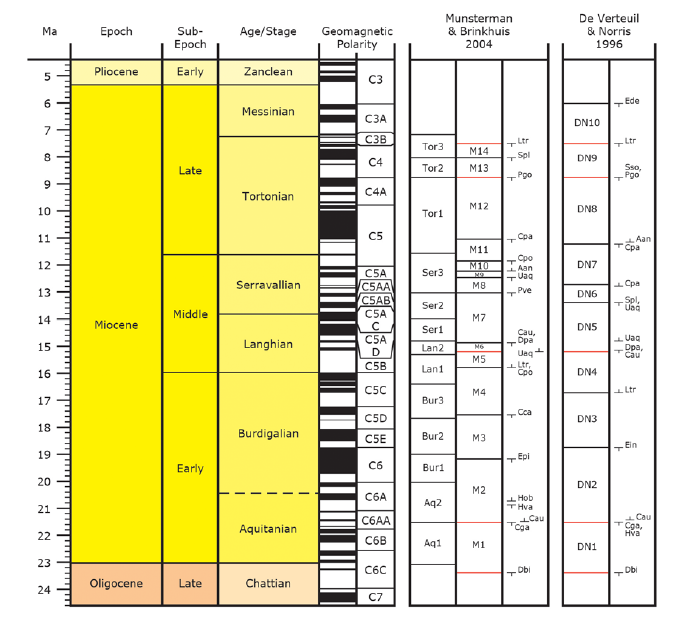Sinds begin 2019 zijn alle artikelen van de Nederlands Journal of Geosciences open access. De artikelen zijn te vinden op de website van Cambridge University Press via deze link.
Het meest recente artikel is geschreven door: Dirk K. Munsterman et.al. Getiteld: An updated and revised stratigraphic framework for the Miocene and earliest Pliocene strata of the Roer Valley Graben and adjacent blocks.
Het artikel beschrijft de huidige lithostratigrafische grenzen van het Mioceen en oudste Pliocene in Nederland, de Breda formatie. Gedetailleerde interpretatie van seismische lijnen heeft geresulteerd in de herkenning van drie discordanties in het Mioceen. Na deze studie is een verbeterd lithostratigrafisch model voor het Neogeen van de zuidelijke Noord Zee voorgesteld.
Abstract: In the Netherlands, the bulk of the Miocene to lowest Pliocene sedimentary succession is currently assigned to a single lithostratigraphical unit, the Breda Formation. Although the formation was introduced over 40 years ago, the definition of its lower and upper boundaries is still problematic. Well-log correlations show that the improved lecto-stratotype for the Breda Formation in well Groote Heide partly overlaps with the additional reference section of the older Veldhoven Formation in the nearby well Broekhuizenvorst. The distinction between the Breda and the overlying Oosterhout Formation, which was mainly based on quantitative differences in glauconite and molluscs, gives rise to ongoing discussion, in particular due to the varying concentrations of glauconitic content that occur within both formations. In addition, the Breda Formation lacks a regional-scale stratigraphic framework which relates its various regionally to locally defined shallow marine to continental members. In order to resolve these issues, we performed renewed analyses of material from several archived cores. The results of archived and new dinocyst analyses were combined with lithological descriptions and wire-line log correlations of multiple wells, including the wells Groote Heide andBroekhuizenvorst. In this process, theupdateddinocyst zonationof Munsterman& Brinkhuis (2004), recalibrated to the Geological Time Scale of Ogg et al. (2016), was used. To establish regionally consistent lithostratigraphic boundaries, additional data was used along a transect across the Roer Valley Graben running from its central part (well St-Michielsgestel-1) towards the southern rift shoulders (well Goirle-1).

Along this transect, chronostratigraphic and lithostratigraphic analyses were integrated with well-log correlation and the analyses of seismic reflection data to constrain geometrical/structural relationships as well. The results led to the differentiation of two distinct seismic sequences distinguished by three recognisable unconformities: the Early Miocene Unconformity (EMU), the Mid-Miocene Unconformity (MMU) and the Late Miocene Unconformity (LMU). The major regional hiatus, referred to as the Mid-Miocene Unconformity, occurs intercalated within the present Breda Formation and compels subdivision of this unit into two formations, viz. the here newly established Groote Heide and the younger Diessen formations. Pending further studies, the former Breda Formation will be temporally raised in rank to the newly established Hilvarenbeek subgroup, which comprises both the Groote Heide and Diessen formations. Whereas these two sequences were already locally defined, a third sequence overlying the LMU represents two newly defined lithostratigraphical units, named the Goirle and the Tilburg members, positioned in this study at the base of the Oosterhout Formation. Besides their unique lithological characteristics, in seismic reflection profiles the Goirle and the Tilburg members stand out because of their distinct seismic facies. Use of an integrated, multidisciplinary and regional approach, an improved southern North Sea famework and more comprehensive lithostratigraphic subdivision of Neogene successions is proposed for the Netherlands, to make (cross-border) correlations more straightforward in the future.
